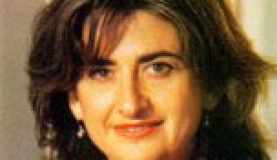
Elisabeth Targ (1961-2002), daughter of American parapsychologist Russell Targ, was a psychiatrist and pioneer in the field of mind-body medical research, whose 1999 study on the effect of prayer on AIDS patients was the cause of controversy.
Background
Elisabeth Targ received her MD and a master’s degree in neuropharmacology from Stanford University. She was a pioneer in the field of mind-body medical research, holding the posts of professor of clinical medicine at the University of California, San Francisco, and director of the Complementary Medicine Research Institute at the California Pacific Medical Centre. She was editor of Alternative Therapies and a regular contributor to Spirituality and Health Magazine.
The daughter of veteran parapsychologist Russell Targ, Elisabeth was involved in psi research in early childhood, and performed outstandingly in informal testing.1
Targ died prematurely in 2002 of a brain tumour, aged 40.
Reviewing Distant Healing
The term ‘distant healing’ describes the focused mental intent of one person to affect positive changes in the wellbeing of a remotely located individual. In a review published in 1997, Targ summarizes numerous, well-controlled experiments that demonstrated distant mental influence on humans, animals, and other biological systems. Insufficient formal clinical research prevented Targ from drawing definitive conclusions; however, she made suggestions for methodological improvements.2
A 2014 review of 57 distant healing experiments found highly significant evidence even after low quality studies were excluded.3
AIDS Study
In 1999, Targ and co-authors published the results of a study of distant healing by prayer of AIDS patients. Forty patients with advanced AIDS were matched for age, CD4 count and AIDS-defining illnesses and randomly selected to either the distant healing or no-treatment control condition. After six months, individuals who were prayed for had fewer illnesses (p = 0.04), fewer doctor visits, (p = 0.01), and fewer days in hospital (p = 0.04). Targ concluded that a distant healing effect in AIDS had been demonstrated.4 It was later revealed that the study was insufficiently blinded and statistically flawed.5 No distant healing effect was observed when more appropriate statistical techniques were applied in a larger study with 156 AIDS patients.6
Michael Duggan
Literature
Astin, J., Stone, J., Abrams, D., Moore, D., Couey, P., Buscemi, R., & Targ, E. (2005). The efficacy of distant healing for human immunodeficiency virus: Results of a randomized trial. Alternative Therapies in Health and Medicine 12, 36-41.
Bronson, P. (2002). A prayer before dying. Wired 10/12.
Levine, E., & Targ, E. (2002). Spiritual correlates of functional well-being in women with breast cancer. Integrative Cancer Therapies 1, 166-74.
Roe, C., Sonnex, C., & Roxburgh, E. (2014). Two meta-analyses of non-contact healing studies. Explore: The Journal of Science and Healing 11, 10.1016
Sicher, F., Targ, E., Moore, D., & Smith, H. (1999). A randomized double-blind study of the effect of distant healing in a population with advanced AIDS. Report of a small scale study. Western Journal of Medicine 169, 356-63.
Targ, R., & Puthoff, H. (1977). Mind Reach: Scientists Look at Psychic Ability. New York: Delacorte Press.
Targ, E. (1997). Evaluating distant healing: A research review. Alternative Therapies in Health and Medicine 3, 74-8.
Targ, E. (2002). Research methodology for studies of prayer and distant healing. Complementary Therapies in Nursing & Midwifery 8, 29-41.

